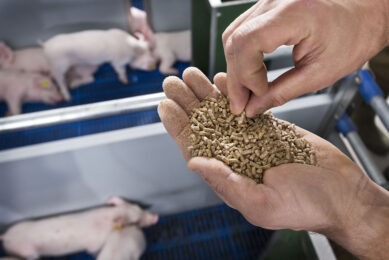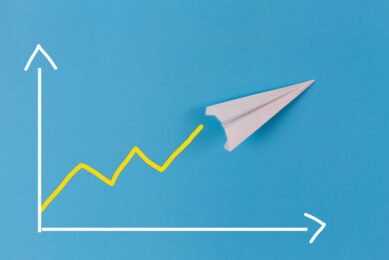Ag economist: Higher feed costs mean pricier pork in 2011
It costs a lot more this year to feed meat animals corn and soybean meal than it did just a few years ago. By the end of 2011, meat eaters will be forking out more money, as well, a Purdue University agricultural economist says.
Rising grain prices are pushing feed costs higher for U.S. livestock producers, said Chris Hurt. With feed making up as much as 60 percent of a livestock producer’s costs, beef and pork producers are expected to reduce their herd sizes or leave them unchanged next year. Poultry farmers could increase production slightly.
That all adds up to sticker shock for consumers – especially those who eat beef, Hurt said.
“When we look at the period prior to 2007, corn prices were averaging closer to $2 a bushel and we saw retail prices of beef average about $3.84 per pound,” Hurt said. “Now corn prices are around $5.50 a bushel, and we’re projecting for 2011 that we’ll reach about $4.65 a pound for beef.”
Three primary factors are contributing to the rapid increase in corn prices, Hurt said. As incomes rise in developing countries, people are buying more food. Also, the biofuels industry continues expanding and using more corn. And the weak U.S. dollar encourages larger corn purchases by foreign buyers who can afford to outbid domestic buyers for U.S. grain.
“Production has been a concern, as well,” Hurt said. “We’ve already got very tight supplies of corn, and now this fall we see corn yields in the United States dropping below trend levels. There was anticipation even into August that we were going to be above trend.”
Beef producers are adjusting cow numbers downward to offset the feed cost increases. U.S. beef cow numbers are expected to reach about 31 million head later this year, down from about 35.7 million in 1996 when herd numbers began declining. Hurt projects U.S. beef production will dip another 2 percent to 3 percent in 2011.
There have been periods of expansion and contraction within the hog industry for years. The coming year should be one of relatively little change in production for pork producers, who are dealing with extreme feed prices, Hurt said. Fortunately, average hog prices should be at or somewhat above average production costs through most of 2011, he said.
“We had been thinking that the pork industry could expand in the range of 1-2 percent next year, but with the great uncertainty about feed costs, I think we’re actually going to see that industry pretty close to unchanged, or up at most about 1 percent,” Hurt said.
Poultry producers – specifically those who raise broilers – could see their production up as much as 2 percent in the year ahead, Hurt said. The broiler industry is bumping up production to grab greater market share among the animal species. Hurt said that strategy demands more feed, which could pull grain prices even higher.
Although high feed prices are a threat to many in the livestock industry, producers can take steps to weather the economic storm, Hurt said.
“If they can get the average price in terms of buying their feed ingredients for 2011, most producers can at least come close to breaking even and paying all of their costs,” he said. “They should diversify their buying strategies over time.
“The second important message is don’t expand production. If we keep our production about like it is now, I think we’ll be able to get through the year without major losses. Then we’ll see what the 2011 crops bring – perhaps a moderation in feed prices and a clearer picture of whether we can expand.”
Join 18,000+ subscribers
Subscribe to our newsletter to stay updated about all the need-to-know content in the pigsector, three times a week. Beheer
Beheer










 WP Admin
WP Admin  Bewerk bericht
Bewerk bericht